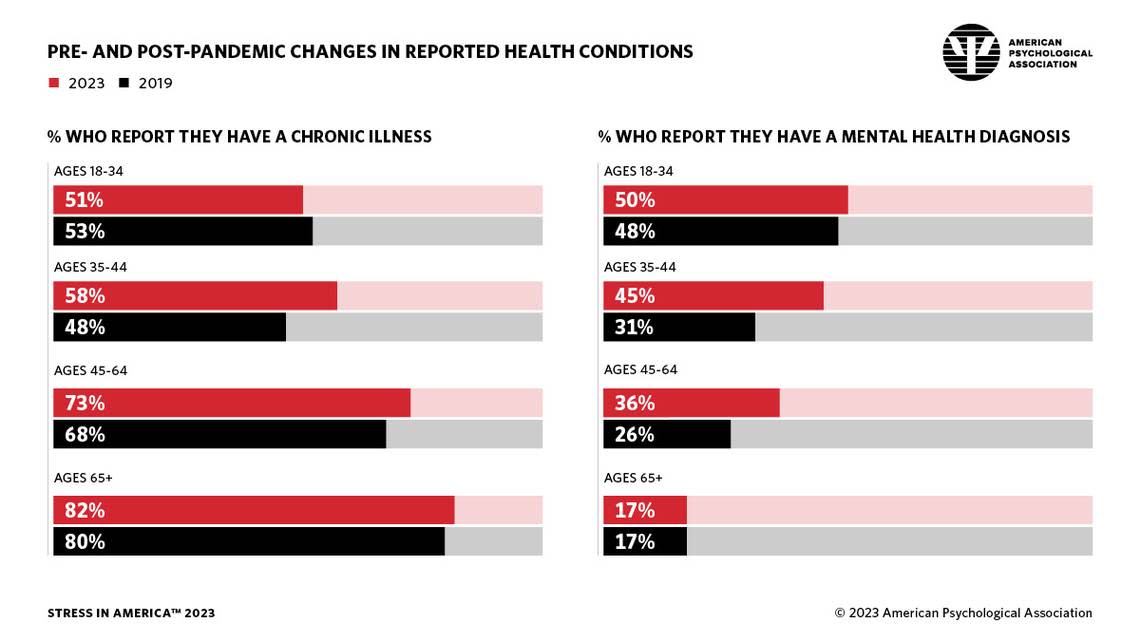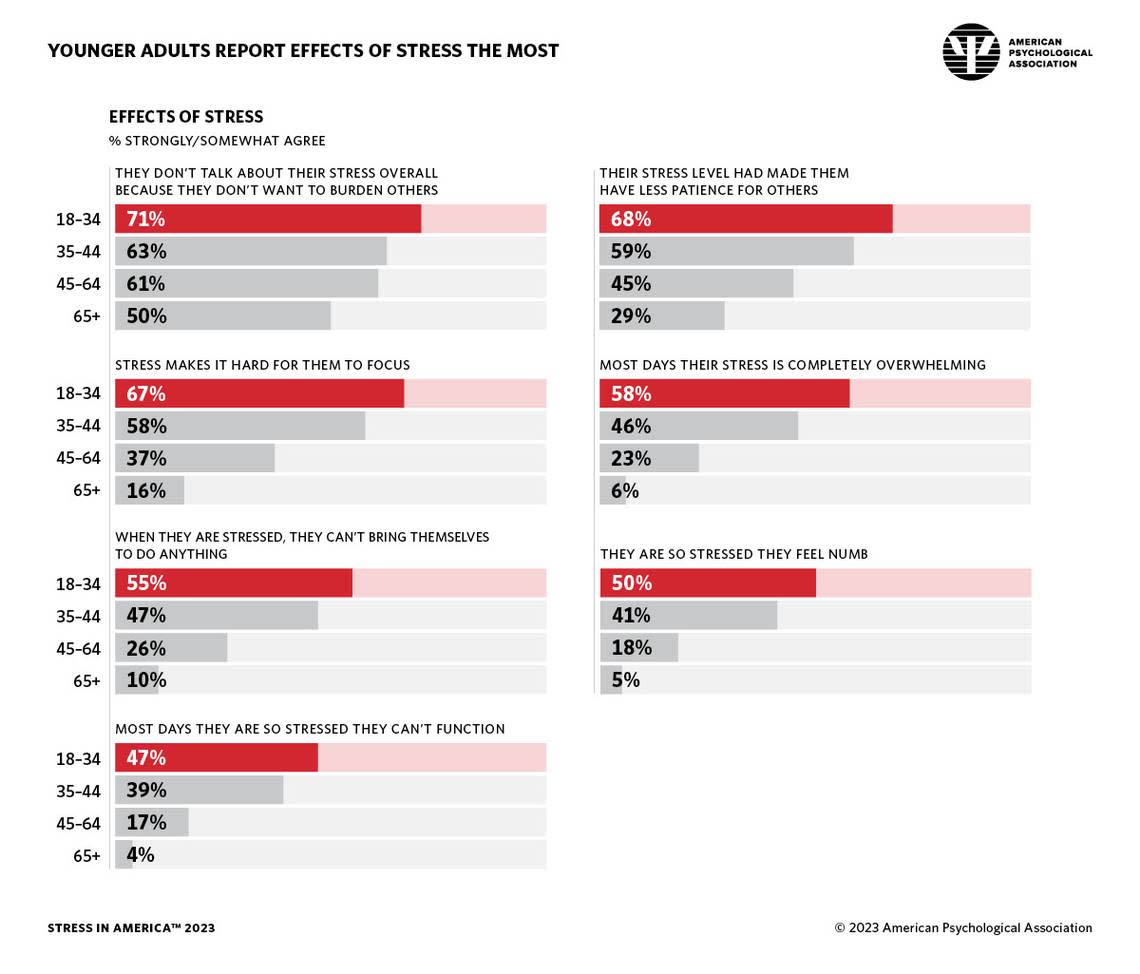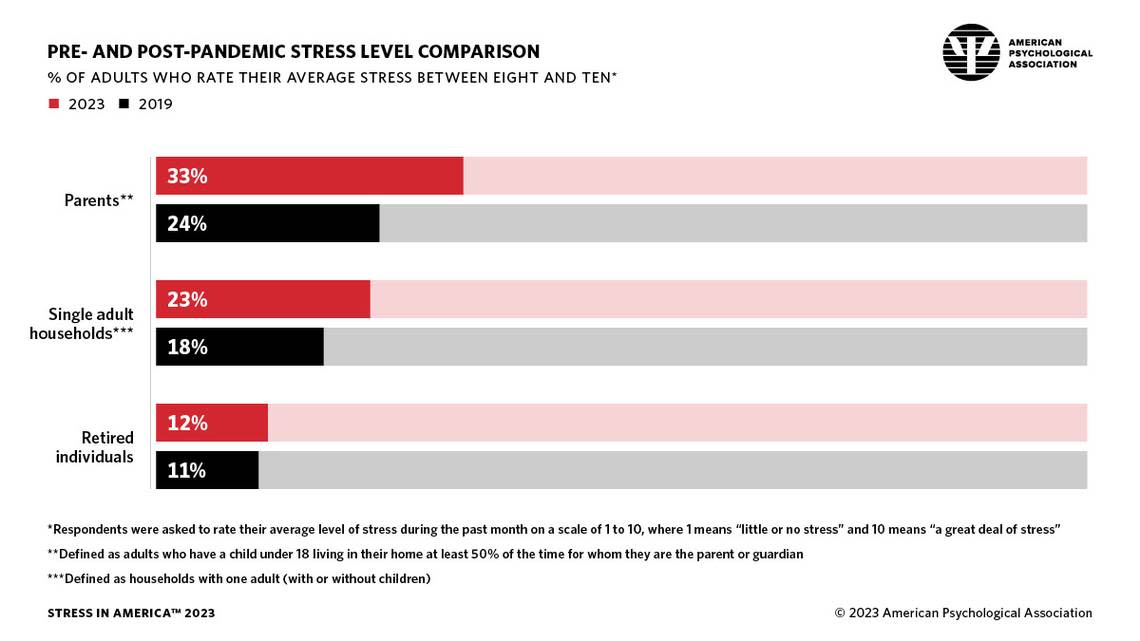‘Collective trauma’ from COVID remains an issue, survey finds. Experts explain why
Hospitalizations may be low and indoor dining may be open, but psychological experts warn American society is far from being “back to normal” after what they are categorizing as the “collective trauma” of the COVID-19 pandemic.
In a new report from the American Psychological Association, published Nov. 1, mental health experts argue the long-term effects of the pandemic on chronic and mental health will persist long after the official public health emergency ended on May 11.
The report, titled “Stress in America 2023: A Nation Recovering from Collective Trauma,” centers around a nationwide survey — involving more than 3,000 participants — that asked the average person about their health, stress levels and mental illness in 2023 compared to 2019.
“The COVID-19 pandemic created a collective experience among Americans. While the early pandemic lockdowns may seem like the distant past, the aftermath remains,” APA Chief Executive Officer Arthur C. Evans said in a news release accompanying the report. “We cannot ignore the fact that we have been significantly changed by the loss of more than one million Americans, as well as the shift in our workplaces, school systems and culture at large. To move toward post-traumatic growth, we must first identify and understand the psychological wounds that remain.”
The survey was conducted online by The Harris Poll on behalf of the APA and included 3,185 people over the age of 18 ranging in ethnicity, race, gender and life circumstances.
Here is what the survey found.
Two out of three adults have been diagnosed with a chronic illness
While many of the study participants responded that they felt their physical health was very good or excellent, a majority of the respondents said they had been diagnosed with a chronic illness, the survey showed.
Two-thirds of the respondents, or 66%, said a health care provider had diagnosed them with a chronic illness, ranging from high blood pressure, 28%, to arthritis, 17%.
“Stress puts the body on high alert and ongoing stress can accumulate, causing inflammation, wearing on the immune system, and increasing the risk of a host of ailments, including digestive issues, heart disease, weight gain, and stroke,” psychologists said in the report.
Within adults ages 35 to 44, that number increased from 48% in 2019 to 58% in 2023, the highest jump of any age group.
“Those ages 35 to 44 reported having the most factors that cause them significantly more stress today than in 2019, which include money, the economy, family responsibilities, personal safety, and discrimination,” the report said.

Young adults report more symptoms of stress than older adults
The same age group also saw the largest increase in mental health diagnoses, increasing from 31% in 2019 to 45% in 2023, according to the survey.
But adults between the ages of 18 and 34 had the highest rate of mental illness with about 50% of the group being diagnosed in 2023.
“The 2023 survey data showed that this age cohort was more likely than their older counterparts to report many effects of stress,” the report said. “They also were more likely to report not wanting to talk about their stress overall because they didn’t want to burden others.”
Among the effects of stress in the years since the pandemic began, younger adults said their stress made it hard to focus, made it harder to get tasks done, made them less patient and said the stress sometimes overwhelmed them or made them feel numb.

Parents face high stress that can be debilitating
“In 2023, parents were more likely than other adults to report that financial strain increased in their household (46% vs. 34%), that money is causing fights in their family (58% vs 30%) and that they are more likely to feel consumed by worries regarding money,” the researchers said in the release.
The findings also showed parents with younger children, under the age of 18, reported having an increase in stress that was overwhelming and made them numb in a way that they couldn’t function, the report said.
More than just financial stress, stress across age groups was also caused by worrying about the future of the country, violence and crime, U.S. debt, mass shootings, social divisiveness and healthcare, all disparities highlighted during the COVID-19 pandemic.

Parents were also more likely to report being diagnosed with a chronic illness compared to other adults in the same age range, the report said.
About 56% of parents reported chronic illness in 2019, but that increased to 63% in 2023.
‘Effects don’t end when the stressful experience ends’
“The continued prevalence and severity of stress has made it a critical area of research for psychologists,” the researchers summarized in the report.
Three years after the COVID-19 pandemic began, America and Americans are still recovering, and psychologists say the process will take time.
“Effects don’t end when the stressful experience ends,” the researchers noted in their key findings.
Americans may never be the same as they were before COVID-19 swept the world, but that also isn’t necessarily a bad thing.
“You need stress — and often grow from it,” the report said.
Food dye faces first statewide ban. Why some officials are concerned about Red No. 3
‘Gas station heroin’ banned in 9 states. What is tianeptine and why is it dangerous?
Health experts expand RSV vaccine recommendations. Here’s who should get the shot
Do CVS, Walgreens have the new COVID vaccine? What to know about booster appointments
